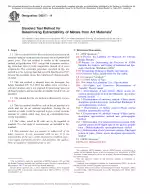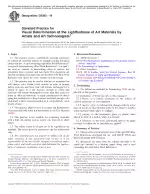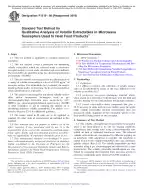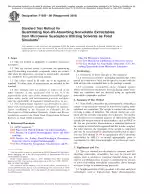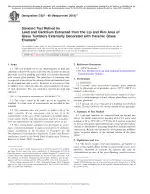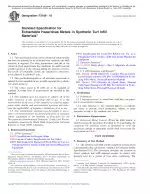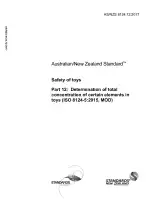ASTM D5517-14 PDF Download
Standard ENStandard Test Method for Determining Extractability of Metals from Art Materials
Also Known As:
The standard test procedure for figuring out if metals may be extracted from art materials is called ASTM D5517-14. This test method's objective is to determine whether metals from art supplies can dissolve in a weak acid medium. It is not meant to replace in vivo testing of metal absorption; rather, it is meant to be used as an indicator of the quantity of metal that is easily available for absorption. In the total evaluation of metal-containing art materials, other data such as physico-chemical properties, toxicokinetics, and mechanisms of toxicity should be taken into account.
This test method uses an extractant to execute the extraction processes at body temperature while simulating the acid potential of stomach juice. The process is more exacting than the metal extraction method described in Specification F963 because more metal can be extracted. The difference between this test technique and the European Toy Safety Standard, EN 71-3:1994, is that it does not call for a solvent extraction phase when processing wax- or oil-based materials and does not set acceptable metal levels.
It should be mentioned that the results of metal extraction should, in the best situations, be 250 ppm or less. The extractant volume should be increased to 100 mL if the outcomes surpass this cutoff. In order to estimate soluble metals more precisely, the test method should be applied to the artwork as a whole rather than to individual components. In Appendix X1 of the standard, the justification for this test method is covered.
| Descriptors | extractability, metal concentration, art materials, acid potential,Artist Paints and Art Materials,Extraction,Inorganic Matter Content,pH,Physical Properties |
| ICS Codes | 97.195 - Items of art and handicrafts. Cultural property and heritage |
| Language(s) | English |
| File Size | 71.7 KB |

